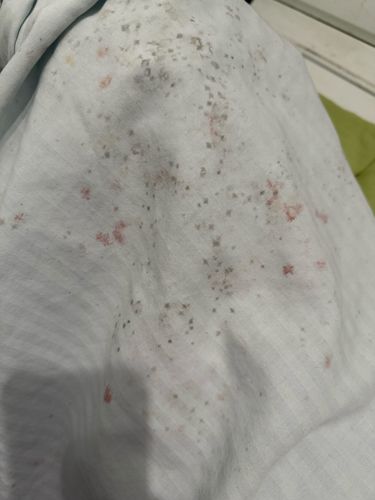Bed Bug
Scientific Name: Cimex lectularius
Order & Family: Hemiptera (order) / Cimicidae (family)
Size: 4-5 mm (adult)

Natural Habitat
Primarily human dwellings, especially bedrooms, mattresses, bed frames, furniture, and cracks/crevices near hosts.
Diet & Feeding
Exclusively blood of warm-blooded animals, primarily humans. They feed by piercing the skin with their proboscis and sucking blood.
Behavior Patterns
Nocturnal feeders, hiding during the day. They are attracted to carbon dioxide and body heat. They tend to live in clusters and leave behind fecal spots (digested blood) which appear as dark, small spots, and sometimes blood stains from crushed bugs or feeding wounds.
Risks & Benefits
Potential risks include itchy bites, skin irritation, secondary infections from scratching, and psychological distress. They are not known to transmit diseases to humans. There are no known direct benefits to humans or ecosystems, they are considered pests.
Identified on: 11/6/2025